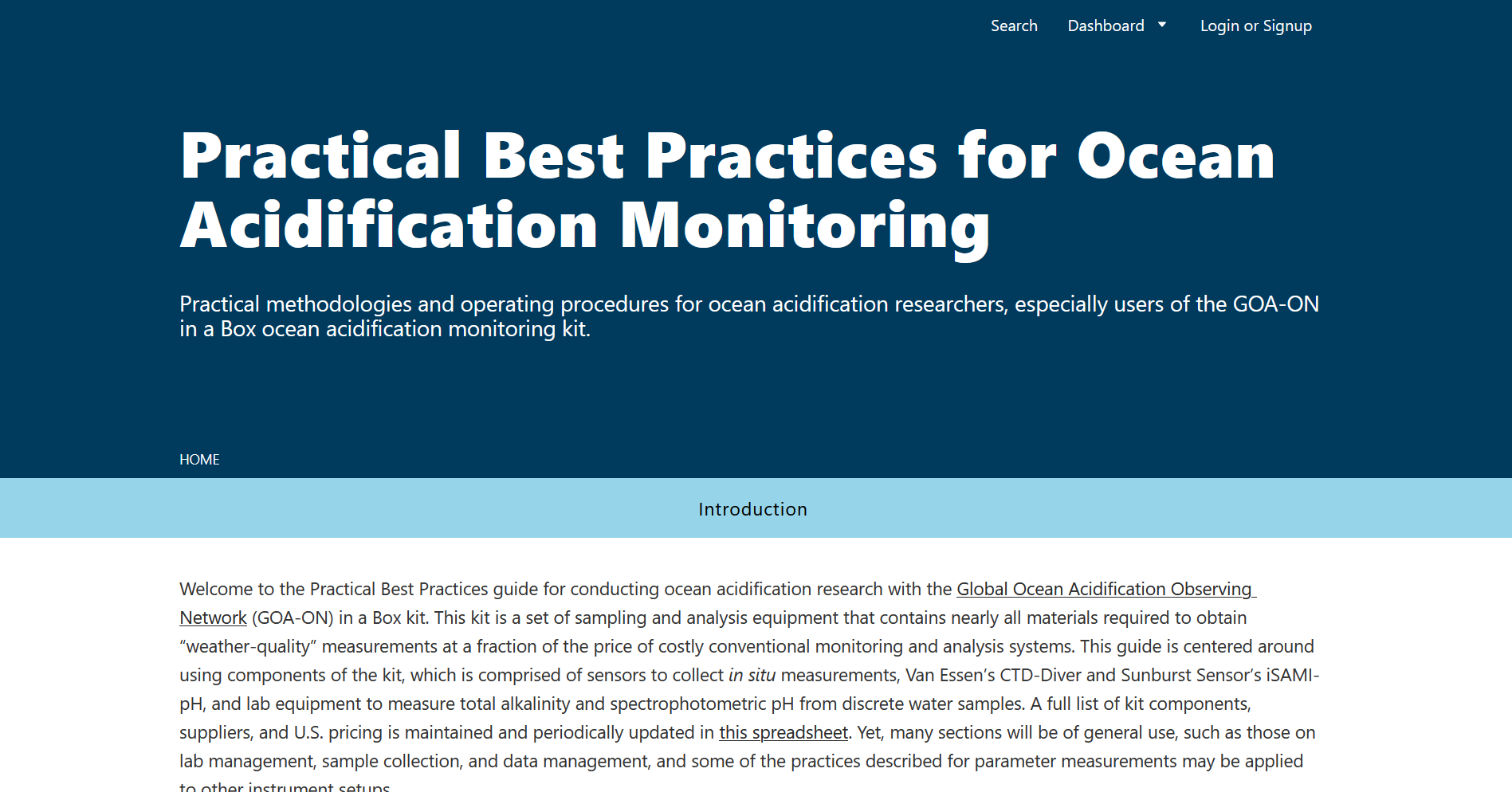Practical Best Practices for Ocean Acidification Monitoring. Version 1.1.

Average rating
votes
Date
2024Editor
Lowder, K.
Chu, S.
Easley, R.
Spaulding, R.
Peterson, B.
Grabb, K.
Reed, A.
Status
PublishedMetadata
Show full item recordAbstract
Welcome to the Practical Best Practices guide for conducting ocean acidification research with the Global Ocean Acidification Observing Network (GOA-ON) in a Box kit. This kit is a set of sampling and analysis equipment that contains nearly all materials required to obtain “weather-quality” measurements at a fraction of the price of costly conventional monitoring and analysis systems. This guide is centered around using components of the kit, which is comprised of sensors to collect in situ measurements, Van Essen’s CTD-Diver and Sunburst Sensor’s iSAMI-pH, and lab equipment to measure total alkalinity and spectrophotometric pH from discrete water samples. A full list of kit components, suppliers, and U.S. pricing is maintained and periodically updated in this spreadsheet. Yet, many sections will be of general use, such as those on lab management, sample collection, and data management, and some of the practices described for parameter measurements may be applied to other instrument se.....
Resource URL
https://oceanacidificationcookbook.pubpub.org/Other Title
Practical best practices. Version 1.1.Publisher
GOA-ON: Global Ocean Acidification Observing NetworkDocument Language
enSustainable Development Goals (SDG)
14.3Essential Ocean Variables (EOV)
Inorganic carbonDissolved organic carbon
Maturity Level
MatureDOI Original
https://doi.org/10.21428/d8129fa3.1130d5cfCitation
Lowder, K., Chu, S., Easley, R., Spaulding, R., Peterson, B., Grabb, K. and Reed, A, (Eds) (2024) Practical Best Practices for Ocean Acidification Monitoring. Version 1.1. GOA-ON: Global Ocean Acidification Observing Network. Available: https://oceanacidificationcookbook.pubpub.org/Collections
The following license files are associated with this item:
 Repository of community practices in Ocean Research, Applications and Data/Information Management
Repository of community practices in Ocean Research, Applications and Data/Information Management
